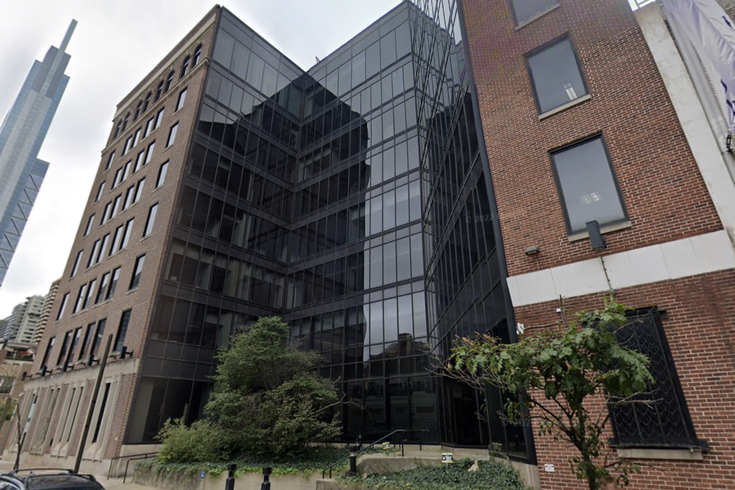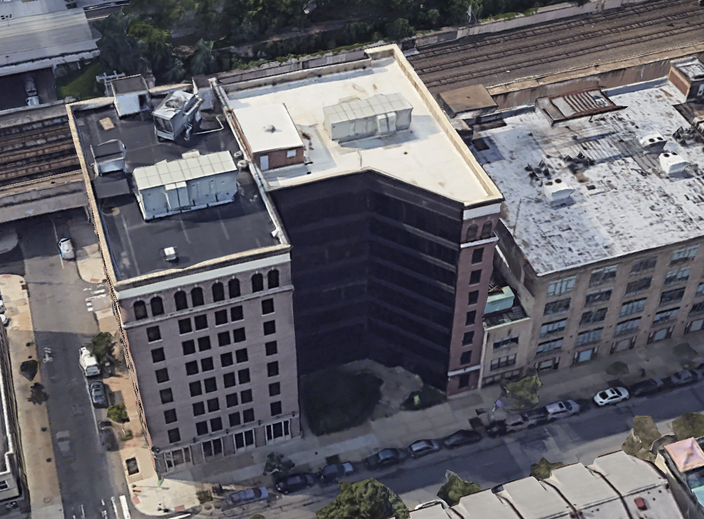
May 19, 2023
 StreetView/Google
StreetView/Google
The former Jewish Community Services Building at 2100-12 Arch St., sold last month, will be converted into 120 apartments with a ground-floor commercial space.
An eight-story office building formerly owned by the Jewish Federation of Greater Philadelphia will be converted into a residential apartment complex with 120 units.
The property at 2100-12 Arch Street, formerly the Jewish Community Services Building, was sold last month for $12 million to MM Partners, a developer that specializes in adaptive reuse projects. A zoning permit was issued this week for the planned residential conversion, which will include commercial space on the ground floor. A timeline for the project isn't yet known.
Ever since the COVID-19 pandemic drastically upended commercial real estate markets, proponents of office-to-residential conversions have argued that aging, vacant office buildings should be repurposed for residential use.
Property records show the building was constructed in 1913. The Jewish Federation sold the 121,500-square-foot property because it wasn't being optimized spatially; the organization had been leasing space to nonprofits but did not want to be a long-term landlord. It has since moved its offices to a 23,000-square-foot space on a single floor of a building at 20th and Market Streets.
MM Partners has completed more than a dozen adaptive reuse projects in Philadelphia over the years, including the conversion of Fairmount's AF Bornot Dye Works building, which was turned into a mixed-use facility; the Waterworks apartments, built in a former Manayunk industrial warehouse; and the former F.A. Poth Brewing Co. building in Brewerytown that is now apartments and commercial space.
Although such projects have been touted as solutions to office vacancies, especially as a work-from-home world endures, adaptive reuse projects are difficult to complete technically and financially. Office buildings are constructed in a way that makes it difficult for natural light to enter, and their centralized utilities make HVAC and plumbing hookups complicated for apartments.
Office vacancies are also scattershot. Struggling buildings are not necessarily bereft of renters, and mixing offices with new residences, across multiple floors, is not ideal for adapting an older building compared to constructing a new co-living space (where people rent apartments and work).
Even though residential rents have risen alongside inflation in recent years, office rents remain more expensive per square foot, so developers and building owners may hold out for new leases instead of investing in residential conversions. And even if they do go residential, the adapted properties wouldn't be automatic solutions for people most affected by housing shortages. Without subsidies or other incentives for affordable units, economics points to the apartments being listed at market rates or higher. That's a tough sell to downtown renters in places like Philly, where nearly half of the city's newly constructed apartments are in Center City.
An aerial view of 2100-12 Arch St. in Center City.
Some states and municipalities have been exploring ways to stimulate office-to-residential projects. In March, city leaders in Chicago embraced the idea by investing $550 million to convert three office buildings — with roughly five million square feet of vacant office space — into more than 1,000 mixed-income housing units. And in San Francisco, where the office vacancy rate hit 29.5% in the first quarter of this year, city officials moved to diminish costs and remove barriers to projects.
But results have been limited thus far. A report published last December by Coldwell Banker Richard Ellis, the world's largest commercial real estate firm, found that, despite the hype around office-to-residential conversions, there were only 42 completed conversions in the U.S. last year. An average of 39 conversions were completed annually between 2017 and 2021, the report said.
In Philly, CBRE reported the downtown office vacancy rate stood at about 19.2% in the first quarter of 2023, with just under 44 million square feet unoccupied. The combined suburban area's office vacancy rate was 23.5%, with more than 62 million square feet available. These numbers followed a period of apparent recovery in the middle of last year that was offset by renters downsizing and subleasing excess space.
During the COVID era, Philly office occupancy lost more than 9.7 million square feet, which the Inquirer noted is about the size of eight Comcast Centers.
 Source/Google Earth
Source/Google Earth